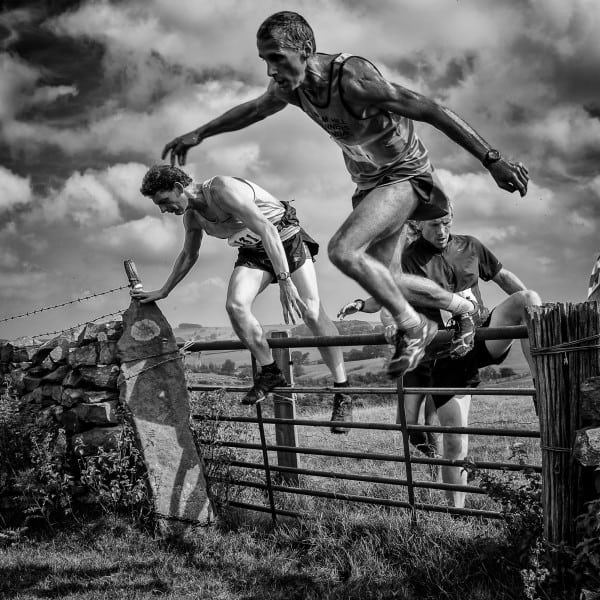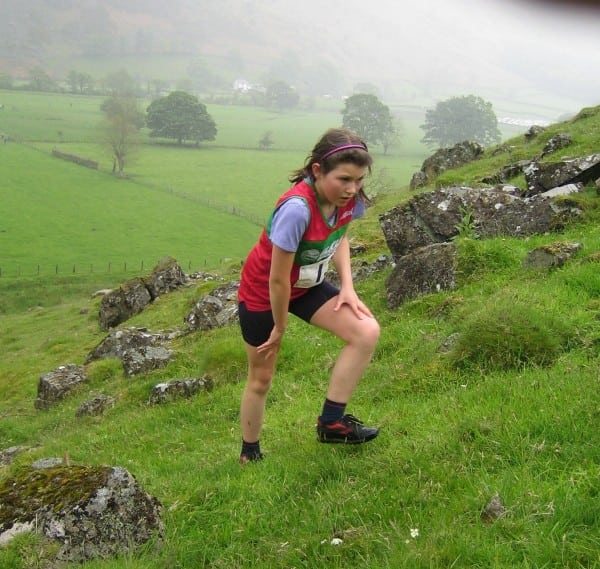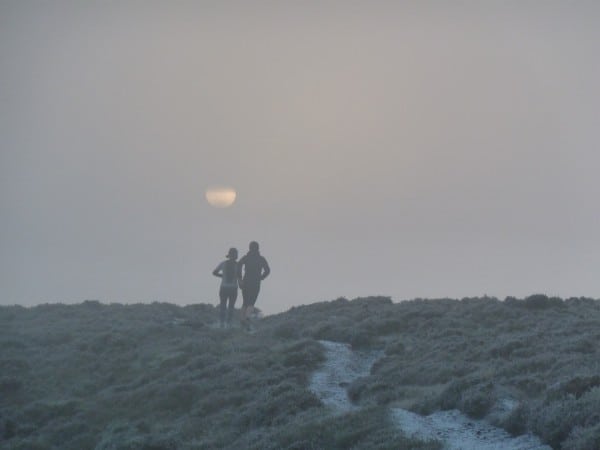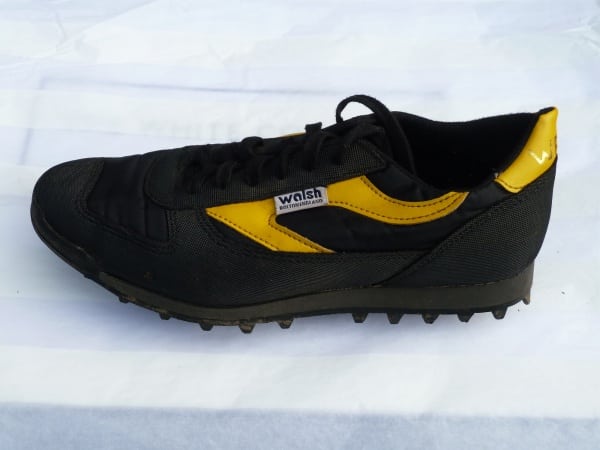In the first part of this two-part guide I wrote about some of the history of fell running. Now, it’s time to turn to look at some of the more practical issues about the sport here in the UK.
Races
First, our races are now metric. As part of the UK Athletics family, we abandoned miles and feet recently. Our wonderful Ordnance Survey maps have for some time used meters and kilometres. Inevitably, the issue of metrication continues to spark debate!
Under FRA rules, races fall into “short”, “medium” and “long” categories. The distance thresholds are:
- Short – 10 kilometres or less;
- Medium – Over 10 kilometres but less than 20 kilometres; and
- Long – 20 kilometres or over.
In addition we categorise races by reference to the amount of climb per kilometre which gives a second categorisation:
- A – Not less than 50 metres per kilometre;
- B – Not less than 25 metres per kilometre; and
- C – Not less than 20 metres per kilometre.
In addition, to be a fell race, the race must be “run on fell, hill or mountain terrain”.
By US standards the upland areas of the UK are not high in terms of altitude but for such a relatively small area of land, we do have a wide variety of terrain, some rougher than others, and some very rough indeed! Geographically, races cover the whole of the UK from the Isle of Skye in the Inner Hebrides off the West coast of Scotland right down to the Isle of Wight, just across from Southampton on the South coast of England.
With almost 500 events in England alone, there are races most weekends. The 2012 calendar has 6 races listed for 1 January and a closer on the morning of New Year’s Eve. The bulk of the races in England take place in the traditional upland areas of the Lake District, the Pennines, the Yorkshire Dales and the White and Dark Peak.
So, as far as the English calendar is concerned, we go from the previously mentioned Burnsall Fell Race at 2.4 kms and 275 metres of ascent in the Dales up to the likes of the Old Counties Tops Race at 59 kms and 3,050 metres of ascent in the Lakes and the High Peak Marathon at 67 kms and 1,645 metres of ascent in the Dark Peak area. These latter two races are for pairs and teams of 4 respectively. The HP Marathon starts at 11:00 pm in early March and the leading teams will finish not long after dawn the next morning.
An increasing number of runners are falling in to veteran’s categories. And at the other end of the age spectrum junior races are popular and well organised with their own championship.
Bill Smith’s book, previously referred to, contains an extensive section (Part 5) entitled “The Races” between pages 163 and 365. Peruse at your leisure to get the flavour of what is on offer!
This is a Quick Guide and so rather then recounting my own experiences of various races, I thought it best to provide a link to a very fine race report for readers to gain some insight into a classic category A short fell race:
This is the late Darren Holloway’s account of the 2012 Scafell Pike Race, up and down England’s highest mountain.
[Note: There is a deep poignancy for me in sharing this piece with you. Darren suffered a fatal heart attack aged 42 whilst running leg 4 of the Ian Hodgson Mountain Relay on Sunday 7 October 2012, literally days after penning this piece for his Club website. Darren was a very good fell racer and a doughty competitor, but a true gentleman who encouraged hundreds of runners of all standards over his career. Like many others in our community, I will miss Darren a great deal.]
Weather
“Crap weather” wrote Nick Clark. Well, he’s not far wrong. The UK has a maritime climate and it can rain here quite a bit. In the upland areas of these fair Isles, it rains a lot! Right at the end of the Borrowdale valley in the Lake District, as you climb towards England’s highest mountain, lies Sprinkling Tarn (a “tarn” being a small body of water usually in an upland location.) A small patch of ground here receives 185 inches of rain every year. Seathwaite village, down in the valley, gets “just” 133 inches. On 19 November 2009, at Seathwaite Farm, 12.45 inches of rain fell in 24 hours, the heaviest ever recorded anywhere in any 24 hour period in British history.
In most upland areas, add in low cloud, mist and fog and winds which can be fierce, and running conditions in the higher upland areas can become extremely challenging at any time of year.
In winter months, temperatures in the upland areas can drop well below zero and snow is a regular feature on higher ground in the dark months. In parts of upland Scotland, only a few feet of altitude prevents permanent glaciation. It is important to recognise the fundamental dampness of the climate here, which can make the winter cold go through your bones and come right out the other side.
For me, the weather above all else, defines fell running in these islands. Unlike counterparts in various parts of the world who can simply wait for tomorrow when the weather will likely be fine, if we want to run, we often have to go out and get wet and cold, even in summer.
Footwear
Unsurprisingly, the damp underfoot conditions have lead to the development of unique types of footwear to allow us to run as safely as we can in the mountains.
Keen observers may have spotted Joe Grant’s Walsh PBs on occasion.
For many years Walsh had the fell running footwear field virtually to itself, but in recent years has been challenged by Inov-8.
Classic fell shoes are lightweight and have deeply studded soles. The Walsh PB remains a favourite with many, but there are those who maintain that the Mudclaw from Inov-8 has the best grip of any fell shoe. You pays your money and takes your choice, as they say.
In truth, British fell runners are obsessed with grip. Many forget that speeding downhill is as much to do with body position, technique and what is in your head as with what is on your feet (but don’t tell them I said that!) “Brain off, brakes off” gives a good flavour of the mindset required for the type of reckless descending that some of our athletes deliver race after race.
Equipment
As a result of our cooler, wetter climate, we have compulsory equipment rules in many of our races. In category A medium and long races, it is compulsory to carry windproof whole body cover (this includes a hat and gloves), map and compass suitable for navigating the course, whistle and emergency food. Gear is mostly carried in a bum bag (fanny pack) with packs making an appearance at longer races. Race organisers can specify other body cover suitable for the weather conditions, i.e., waterproof instead of windproof.
At category A short races, organisers have the ability to waive the requirements in the event of settled weather confirmed by a local weather forecast, and frequently do so, in whole or part. At my “home” race here on Ilkley Moor, a short race run in February, for instance, the organiser will regularly specify runners to carry a wind or waterproof top as a minimum.
The amount of debate triggered by these simple requirements never ceases to amaze. Runners seek to shave grammes off the weight they carry in races, forgetting that doing a bit more training will have a greater effect then carrying a Pertex top without a hood when a waterproof one with a hood is required. These requirements are safety based and many people have been thankful for them when the mountains have turned nasty on them during races.
For US runners who have raced on the Continent, this may help put the kit requirements at races such as UTMB into some kind of context. Carrying gear is part of our tradition because we need it, often. And as someone who has run through foul and dramatic Alpine weather in two CCCs and one UTMB, someway back from the leaders, and having seen the carnage that results, the requirements speak for themselves.
Navigational Skills
To give a flavour of how things should work, I can do no better than quote from some material that is available to consult on the FRA website:
Anyone who competes in FRA races must be aware that FRA Races are organised on the premise that competitors have the necessary skills to cope with the navigational problems which may occur, whatever the weather.
In many FRA races (those designated with the NS abbreviation), navigational skills are essential and competitors must find their own way around the course. Visibility can be poor at any time of the year and following the runner in front is not a substitute for the sound exercise of the competitor’s own skills and judgement.
The acquisition of these skills is the responsibility of the competitor. To assist members of the FRA in acquiring or honing these skills, the FRA delivers regular Navigation Skills Courses, details of which are made available via both the FRA website and The Fellrunner magazine.
One factor to bear in mind is that if you are injured, you may need to get yourself off the fells safely as well as navigating yourself round the route. Escape route planning can be useful.
Some courses are marked or flagged. Some parts of some courses are marked or flagged, often for environmental or safety reasons. But generally courses are not marked and do provide for route selection or choice, and a certain amount of point-to-point travel between checkpoints.
There is little doubt that many fell runners have, shall we say, under-developed navigational skills and that a great deal of “follow my leader” does go on in races. This strategy can work even in bad weather, but as someone who came to fell running with these skills already honed from a number of years of climbing and walking in our mountains, I prefer to be where I am than where they are!
Courses for long-standing races develop small paths or “trods” that reveal the (alleged) racing line, but one of the great delights of fell racing is that good navigation can make a significant difference to your finishing position. Finding your way accurately round a course shrouded in thick hill fog while it pours with rain in desperate underfoot conditions only adds to the deep sense of satisfaction that keeps most of us in the sport for a lifetime.
The Classic Mountain Rounds
Back at the start of Part 1 of this Quick Guide, I mentioned my December 2011 piece on iRunFar about the Bob Graham Round and readers can go back to that piece for a short summary of the history of the Bob Graham or BG as it is known for short.
To return to Clarkie again, Nick wrote a fine piece about his attempt on the BG in mid-winter just before Christmas 2011. What was particularly memorable about the piece for me was the fact that Nick connected immediately with those of us he met and who came out to help him, and was able to record those impressions in such an accurate way. I have no doubt that our community and the mountain running and ultra communities in the US are, at their heart, very similar. Nick’s article is a fine piece of writing and well worth a read.
Nick mentions the two other classic Rounds in the UK, the Paddy Buckley Round in Snowdonia in Wales and Ramsay’s Round in Lochaber in Scotland. Space doesn’t permit a detailed review of these Rounds but suffice to say they each represent a serious all-day mountain challenge (more so than the BG) and completions are much fewer in number.
I count Charlie Ramsay as a friend and he has produced his own website to record key information about his eponymous Round. Some basic information about the Paddy Buckley Round can be found on Bob Wightman’s web pages. The BG Club celebrates the achievements of those who complete the entry test of 66 miles, 42 peaks and 28,000 feet of ascent (sorry, slipped back into Imperial measurements there for a moment).
Beyond the Classic Rounds
Inevitably, 24 hours of suffering in the mountains isn’t enough for some who feel inspired and motivated to go further, with more ascent and thus to suffer for longer.
Here are just a few examples:
In 1979 Roger Baumeister completed a double Bob Graham, going first in one direction and then turning around and going in the reverse direction: 132 miles, 56,000 feet of ascent all completed within 48 hours; 46 minutes and 34 seconds to be precise.
The current holder of the Lake District 24 Hour Fell Record is Mark Hartell, a former winner at Hardrock, who ran round 77 peaks, covering 92 miles and 40,000 feet of ascent back in 1997. Mark reported on this success (pdf) with interspersed reports from his pacers.
In recent years, the summits over 3,000 feet high in Scotland, known as Munros, have been linked together in a continuous round, often entirely self-propelled. As a number of these mountains are on islands, this has meant having recourse to canoe, sail boat or swimming in order to keep the self-propelled ethic in one piece, as well as using the good old bicycle to connect groups of mountains where necessary. Road support, usually a campervan for a temporary home, is a vital part of the logistics jig-saw. Up until 2010, the record for scaling all 283 Munros in a continuous round was held by the Scot Charlie Campbell in 48 days and 12 hours. On 25 April 2010, an Englishman with serious long distance arduous mountain credentials, Stephen Pyke, known by all and sundry as Spyke, embarked on this mountain journey. He reached his final summit on 3 June having completed the round in 39 days 9 hours and 6 minutes. Spyke has share the story of his remarkable effort.
The only stats I have found on the Munros round come via Charlie Campbell who recorded “2.33 miles of swimming, 764 miles of cycling, 893 miles on foot and 411,717 feet of ascent.”
As ever, Bill Smith gives a fine overview of these and other long distance challenges in Stud Marks in Part 3 entitled “Peak Baggers and Bogtrotters” beginning on page 85.
Mountain Marathons
These peculiarly British events began back in 1968 with the first edition of the Karrimor Mountain Marathon. One of the founding fathers of this type of activity, the late Gerry Charnley, expressed the view that the longer one day races were always won by the trained long distance runner “but that the promotion of an annual two day mountain marathon of around 50 miles of really rough country would be a severe test not only of athletic ability, but also of route-finding and mountain craft.”
The first event called for competitors to compete in pairs and to carry various items of essential survival equipment to see them over the weekend, including a Saturday night camp at a pre-arranged spot in the hills that would also be a checkpoint.
Kevin Carr’s piece for iRunFar back in August this year gives an excellent flavour of these events (and the comments on that piece are worth a read, too). Bill Smith provides some historical background in Part 4 of Stud Marks.
In Conclusion
I’m sure I have gone on long enough now, and this was after all intended just as a Quick Guide. The FRA has over 7,000 members these days so there are plenty of us charging around the upland areas of the UK wearing far too little clothing than is probably good for us. We love to introduce capable like-minded outsiders to our sport. With its strong ethos on personal responsibility for our own and each other’s safety in the hills and mountains, it creates bonds that last a lifetime. So if you are passing through the UK, see if you can squeeze in a quick fell race and we’ll introduce you to our particular form of running in the mountains, and you’ll likely be hooked for life.
Like anyone writing about fell running, I owe a debt of gratitude to the late Bill Smith for Stud Marks on the Summits which, despite its relative age, maintains its status as a classic work. I also want to thank Ian Charters, Andy Holden and Mike Baldwin for allowing reproduction of their marvelous photographs.
Lastly, I have to reflect again on the recent passing of Darren (Daz) Holloway, a true competitor and gentleman of the fells. As another friend of mine, Steve Foster, so aptly put it: If there ain’t no hills in heaven, Daz will construct some and soon have everyone inspired to run ‘em.
Thanks Daz, we’ll never forget you.
Call for Comments (from Bryon)
- If you’re a fell runner, what are your favorite types of races? Long or short? Super steep or more rolling?
- Do you have a favorite fell race or two?
- If you’ve logged a classic round, tell us about the journey.
- What are your favorite fell running shoes and other equipment?
- What’s the worst weather in which you’ve ever run a fell race?





